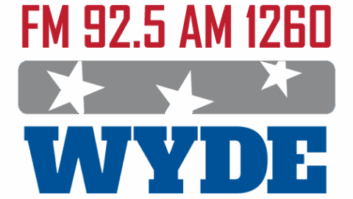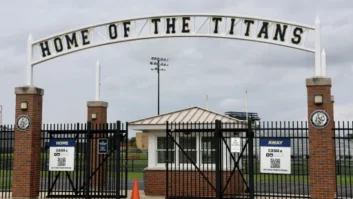One in a series of articles reporting on what the radio industry is telling the FCC about all-digital on the AM band.
Hubbard Radio has been test driving all-digital AM broadcasting on its WWFD(AM) just outside Washington, D.C., since July 2018. According to the broadcaster, the ride has been mostly a smooth one.
The company told the FCC it is fully supportive of a proposal to permit AM licensees — on a voluntary individual basis — to operate in an all-digital format 24/7.
Hubbard says the MA3 signal of WWFD, which operates in full-time all-digital under special temporary authority from the FCC, has proven to be much more robust than the hybrid mode of HD AM broadcasting, and with improved signal coverage. The company says it has received positive feedback from listeners about the fidelity and reliability of their all-digital signal.
“In Hubbard’s experience, the data conclusively confirm that all-digital MA3 operation provides an improved, consistently high-quality listener experience, in terms of audio fidelity and signal robustness,” according to the group’s filing.
[Hear directly from Hubbard’s Joel Oxley in the recent RW webinar “Digital Sunrise for AM.”]
The station, which broadcasts at 820 kHz and is licensed to Frederick, Md., has seen ratings gains since launching the all-digital signal, according to Hubbard.
“WWFD broadcasts an adult album alternative music format. The station had no ratings in its home market of Frederick, Md., for the five years it was an analog station with that format, but now that it is operating in MA3, the station is ranked by Nielsen in the market,” it wrote.
Hubbard is using the MA3 technology to transmit auxiliary data and metadata to listeners of WWFD, it says. “The secondary and tertiary carriers of WWFD can provide stereo audio information, data services such as station logo, album artwork, and other artist experience information, as well as multicast channels.”
[Read: NPR Supports All-Digital on AM, With Caveats]
In addition, earlier reliability issues with the secondary and tertiary carriers on WWFD have since been resolved, Hubbard said. The station fixed the issues by “installing a replacement transmitter, a Nautel NX5, with a pulse duration modulator that runs at a sufficiently high rate to pass the secondary and tertiary carriers, allowing the full MA3 waveform to be transmitted.”
Hubbard says their solutions to the issue will be documented in detail in a forthcoming technical paper.
WWFD in December tested an HD2 multicast channel, according to Hubbard, transmitting musical track data and a station logo image as well. Future versions of enhanced EAS alerting will use the secondary and tertiary carriers to supplement the data transmitted on the Primary IBOC Data Service Logical Channel (“PIDS”) carriers.
“Hubbard believes that these continued improvements in the MA3 delivery system will mitigate any concerns about secondary and tertiary carrier issues, and that these technologies will continue to be expanded to better serve listeners,” it stated.
[Related: NPR Supports All-Digital on AM, With Caveats]
Hubbard also believes all-digital AM technology will help WWFD compete in the dashboard of the connected car.
It commented: “Trends in vehicle entertainment system receiver designs are converging on ‘tuning by visual metadata,’ where listeners select an audio program by pressing a thumbnail image of the desired program. MA3 allows AM broadcasters to have both aural and visual parity with other broadcast services in the automobile dashboard.”
In conclusion, Hubbard told the FCC the MA3 mode of HD Radio provides “far more manageable solutions” to any unintended interference with neighboring analog AM stations in the band when compared to the MA1 mode. In fact, WWFD “has never received any interference complaints from co-channel or adjacent channel stations,” it reported.







